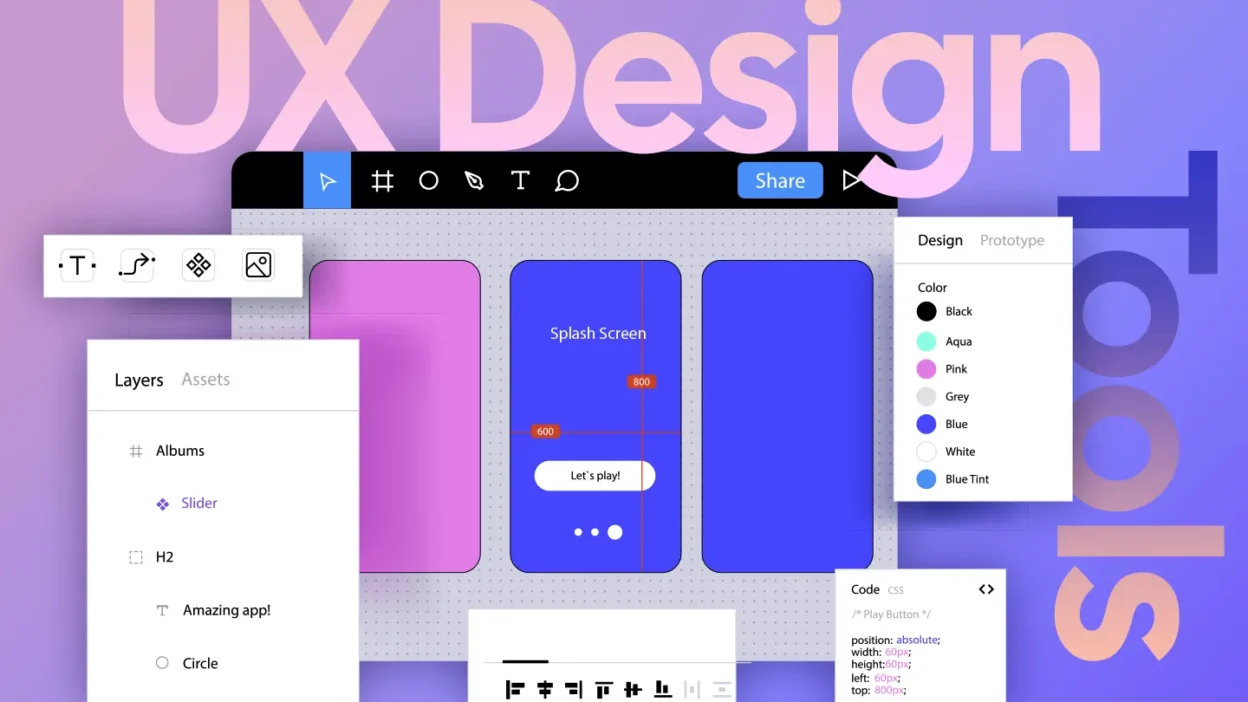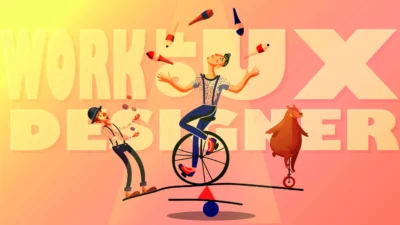UX design has rapidly grown from a niche practice into a vital part of creating digital products. Along with this growth, the tools designers use have changed dramatically. What started with traditional graphic design software has now evolved into powerful, collaborative platforms built specifically for designing user experiences. Whether you’re just starting your UX journey or looking to understand the tools shaping the industry, this article will walk you through the evolution of UX tools, highlight the most popular options today, and help you understand how to choose the right one as you grow in your career.
The Evolution of UX Design Tools
UX design has come a long way in the past few years—and so have the tools designers use.
In the early days, designers mostly relied on tools like Adobe Photoshop, which were built for print and graphic design. These tools weren’t made with user experience (UX) in mind, and they lacked features needed for designing interactive digital products like websites and apps.
But as technology advanced and UX design became more important, the tools had to improve too.
A New Era of UX Tools
In 2010, a game-changing tool called Sketch was released. It was one of the first tools made specifically for UX design—focusing on digital interfaces instead of print.
Soon after, other tools joined the scene:
- Freehand by Miro (2011): Great for quick sketches and team brainstorming.
- Zeplin (2015): Made it easier for designers to share their work with developers.
These tools introduced features like prototyping, easy sharing, and real-time collaboration—things that were missing in older tools.
UX Tools in the Remote Work Era
As more teams started working remotely and companies became more digital, UX tools had to evolve again.
In 2016, two major players launched:
Figma and Adobe XD
Both tools allowed teams to collaborate live, no matter where they were in the world. You could design, prototype, and share work all in one place—perfect for modern design teams.
Today, Figma stands out as one of the most popular tools in the industry. It offers:
- Real-time collaboration (multiple people can design at once)
- Developer handoff features (Dev Mode)
- Prototyping inside the same app
- Tons of plugins to customize your workflow
Adobe XD is still widely used, especially by teams that already use other Adobe tools. It offers features like cloud syncing, and it’s also great for designing without internet access.
Looking Ahead: What Tools Will You Use?
There are lots of UX tools out there. Many of them have similar features, but each one has its strengths. Over your career, you’ll likely use more than one.
In this course, you’ll focus on learning Figma. It’s beginner-friendly, collaborative, and packed with everything you need to design real products. You’ll even build portfolio-ready projects using it.
How to Choose the Right UX Tool (Later in Your Career)
You don’t need to pick your favorite tool right now—but down the road, when you’re deeper into UX, you’ll want to choose tools based on:
1. Your Design Role
Are you aiming to be a UX designer, a visual designer, or maybe a motion designer? Different roles may prefer different tools based on their focus areas.
2. The Work Environmen
Some companies might already use a certain tool and expect you to use it too. In other cases, you might get to choose based on how your team collaborates or the type of project you’re working on.
3. What the Tool Can Do
When picking a UX tool, ask:
- Can I design for mobile and different screen sizes?
- Does it let me build and test interactive prototypes?
- Can I easily share and get feedback from my team?
- Does it support a shared design system to keep styles consistent?
Quick Overview of Popular Tools
Here’s a side-by-side comparison to help you see the bigger picture:
Figma
- Cloud-based, made for real-time team collaboration
- Includes FigJam (a virtual whiteboard for brainstorming)
- Great for remote teams
- Requires internet connection
- Ideal for most designers and modern workspaces
Adobe XD
- Works well if your team already uses Adobe tools
- Built for digital and UX design
- Can be used offline and syncs to the cloud
- Doesn’t offer real-time collaboration like Figma
Sketch, Freehand, Zeplin
- Often used together to cover different needs (e.g., design + handoff)
- Good for teams who prefer offline tools
- Lacks real-time collaboration
- Suitable for teams with established processes
Final Tip: Do Your Research
As you grow in your UX journey, explore the websites of these tools. Each offers free trials, demos, and plenty of learning resources.
But for now, your main focus will be Figma—you’ll learn how to use it, practice with real projects, and build your skills step by step.



